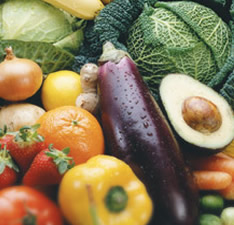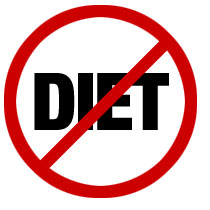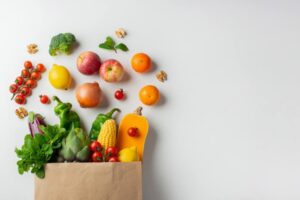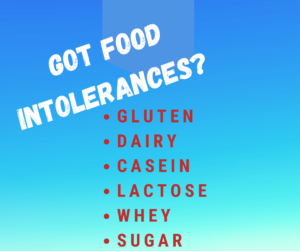I discovered 10 ways to maintain your weight without dieting and want to share them with you. First, I want to share what doesn’t work.
Why Diets Are Not Sustainable
Have you tried every diet on the planet including counting calories, and points and even eliminating entire food groups?! Some may have worked temporarily but none of these are healthy or sustainable. In your quest to lose weight, please don’t starve yourself, limit your food choices, or ingest synthetic foods. We know these techniques do not work long-term.
What Does Work
I’ve maintained my optimal weight for the past 15 years. This, by the way, is the same as my high-school weight, which isn’t bad for a woman 50++ years young! It wasn’t until I stopped the insanity of dieting and started eating whole clean food did I get results.
We all know there is no “one size fits all” in weight loss which is why we recommend nutritional testing. If you’ve attempted these strategies or just want to expedite the weight-loss process, give us a call. We’d love to help you begin a journey to wellness.
Obviously, weight loss shouldn’t be exclusively focused on how you look and feel. Consider longevity or quality of life with your spouse, children, and grandchildren. The long-term goal may motivate you longer than the short-term one. Putting quality foods in your body says you love and respect the temple God gave to you. You will see, feel and experience the difference so that you won’t want to go back to old unhealthy habits.
Here are my 10 Simple Steps to Weight-Loss Success
- Eat clean or organic foods as much as possible. Grow your own and/or buy from farmers who don’t use chemicals. Purchase certified organically grown in the U.S. We are not necessarily overweight so much as we are over toxic because our bodies are inundated with chemicals within the processed foods we eat.
- Eat more fruits, vegetables, and greens. This is one food group that is critically deficient in the diet. This group is also the only one that contains fiber and antioxidants. Animal products don’t. Also, fruits, veggies, and greens digest much easier than meat or dairy products.

- Add essential fatty acid (EFA) foods to your diet. EFA foods include wild salmon, avocados, chia, hemp or flaxseed, walnuts, coconut oil, or extra virgin olive oil (preferably that has not been heated). EFAs are crucial for hormone regulation and brain function as well as other important bodily processes. If you are looking a high-quality omega, we can provide healthcare professional grades at a discount.
- Eat fewer animal products, especially dairy. When you fill-up on plant foods, you naturally eat less animal food. Again, the downside of animal protein is that it is difficult to digest which causes the body stress. It is also inflammatory, and if not eaten organically, it is laden with hormones, genetically modified feed, and antibiotics.
- Start your morning with 6-8 ounces of purified water. Most people are critically dehydrated and are being counter-productive by consuming beverages that dehydrate, such as sodas, coffee, and alcohol. Continue drinking water all day, replacing all other beverages. Water is the best detox and energizer available.
- Sleep 7-9 hours per night and be in bed by 10 p.m. Your body repairs and rebuilds between 10 p.m. and 2 a.m. so it is essential to be asleep during this time frame. Be sure to remove all technology (cell phones, computers/tablets) from your bedroom to eliminate stimulation from electromagnetic radiation. Also, avoid “electronic insomnia” by powering down your cell or tablet at least 60 minutes before bedtime. Obtaining adequate sleep reduces your body’s need for external sources of energy that can cause us to overeat.
- Engage in fun, sweaty activities daily. Do something you enjoy and that gets you moving, like dance, yoga, tennis, walking, etc. Even moving 10-15 minutes is beneficial. You don’t have to buy a gym membership since walking outdoors is great therapy. I own a rebounder, Max Trainer, and a Chi Machine which give me a way to get in my exercise when inclement weather or time constraints prohibit the activity.
- Get the white out of your diet. Greatly reduce or eliminate white foods such as pasta, rice, bread, or potatoes. Pasta and bread are not nutritionally dense, and they contain gluten. Even gluten-free pasta typically consists of low-quality filler ingredients. Quinoa is a more nutrient-dense grain/seed as well as a complete protein. Consider using it in place of gluten-free or traditional pasta noodles.
- Get the gluten out. Many people feel that gluten-free diets are a fad. However, many people are gluten intolerant and have no idea. You can use nutritional testing to determine if you are intolerant and/or perform a simple elimination test for two weeks by going gluten-free. When added back into the diet, most people who are intolerant will experience a multitude of symptoms such as headaches, bloating, gas, increased inflammation, or other digestion issues.
- Monitor your portions. You do not need to count calories or points, just learn to eat to satisfaction instead of to a feeling of fullness. If you eat until you are full, typically, you’ve eaten too much. Americans underestimate the number of poor-quality foods they consume and overestimate the amounts of fruits, vegetables, and greens. Keep half of your intake of each meal from plants.
If this all sounds a bit overwhelming, you don’t have to go it alone. Join our community on Facebook or follow us on Pinterest to stay connected. Or if you are ready to have someone walk you through this process every step of the way and get results faster, I’d love to help! Book your call with us here.






